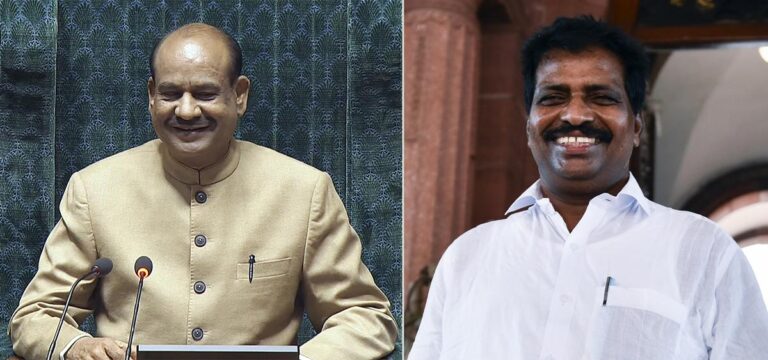The results of the fiercely contested and polarised elections continued to have an impact on the first session of the 18th Lok Sabha, with the post of Speaker pitted between two candidates: Om Birla of the National Democratic Alliance (NDA), who was the 17th Speaker of the Lok Sabha, and K. Suresh of the Indian National Congress, who had served eight terms.
However, this is not the first time that the speaker position has been voted on – it has been voted on the floor of the House at least three times before, and on the other two occasions, the speaker election was held by oral vote, although the opposition party put up a candidate.
Check out highlights from the second day of the Congressional session on June 25, 2024
According to former joint legislative secretary Ravindra Garimella, the Speaker election was first held in 1952 during the first Lok Sabha elections, when GV Mavalankar secured 394 votes, defeating Shantaram More, who managed only 55 votes.
In 1967, in the fourth Lok Sabha election, Neelam Sanjeeva Reddy of the Indian National Congress ran against Tenneti Viswanathan, who was supported by the late Prime Minister Atal Behari Vajpayee, then a Member of Parliament. Reddy won the election as Speaker, receiving 278 votes to Viswanathan’s 207.
And finally, the fifth session of the Lok Sabha was extended by a year following the declaration of Emergency by the late Prime Minister Indira Gandhi in 1975. The then Speaker GS Dhillon had resigned on December 1, 1975. “In 1976, the previous Speaker was appointed as a cabinet minister in the then Indian National Congress government, necessitating the election of Baliram Bhagat,” Garimella said.
Description | What are the speaker’s duties?
On 5 January 1976, during the State of Emergency, Bhagat was elected Speaker, defeating a competing claim by Jagannath Rao Joshi, a leader of the Jana Sangha. Gandhi moved a motion to elect Bhagat as Speaker of the Indian Parliament, while Prasannabhai Mehta of the Indian National Congress (O) moved a motion to elect Joshi as Speaker. Bhagat received 344 votes to Joshi’s 58.
There were two other instances in which competing candidates were put forward in the 10th and 12th Houses of Representatives respectively, but the government candidate was elected by oral vote and the other motions were considered void.

In the 10th and 12th Lok Sabha in 1998, Sharad Pawar, then leader of the Indian National Congress Party, moved a motion to elect PA Sangma as Speaker, but it was rejected. After Pawar’s motion was rejected, the late Prime Minister Atal Bihari Vajpayee moved a motion to elect Telugu Desam Party (TDP) GMC Balayogi as Speaker of the Indian Lok Sabha. Vajpayee’s motion was carried.
These instances highlight the fact that, despite the ups and downs of coalition governments, it has been some time since polls were held to elect the Speaker of India’s Lok Sabha.
WATCH: How is the Speaker of India’s Lok Sabha elected?
With its parliamentary majority dwindling to 240 in the 2019 general elections, the Bharatiya Janata Party (BJP), which leads the ruling coalition, is keen to demonstrate its dominance in Parliament and the stability of its coalition. According to party sources, the effort is to garner comprehensive support beyond that of the NDA, with four Yuvajana Shramika Rythu Congress Party (YSRCP) lawmakers also pledging their support to the NDA.
Minister of Parliamentary Affairs Kiren Rijiju stressed that the Speaker of the Lok Sabha transcends party lines and that it is desirable for the Speaker’s selection to be unanimous and without rancor.

For the opposition, his candidacy would be an opportunity to demonstrate unity against the NDA, but this attempt has been hampered by the fact that the Trinamool Congress (TMC), the constituent party of the Hindu faction, was not informed of Suresh’s nomination before it was filed. The temporary turmoil has now passed, and the TMC has indicated it intends to fight alongside the Hindu faction in the Speaker election.
The nature of the mandate for the 2024 Lok Sabha elections had promised a more tense parliament with a coalition government, but there has been no honeymoon period for the new government and the tug-of-war appears to have already begun.
This is a premium article available only to our subscribers. To read over 250 premium articles every month,
You’ve reached your limit for free articles. Support quality journalism.
You’ve reached your limit for free articles. Support quality journalism.
You have read {{data.cm.views}} from {{data.cm.maxViews}} Free articles.
This is the last free article.

